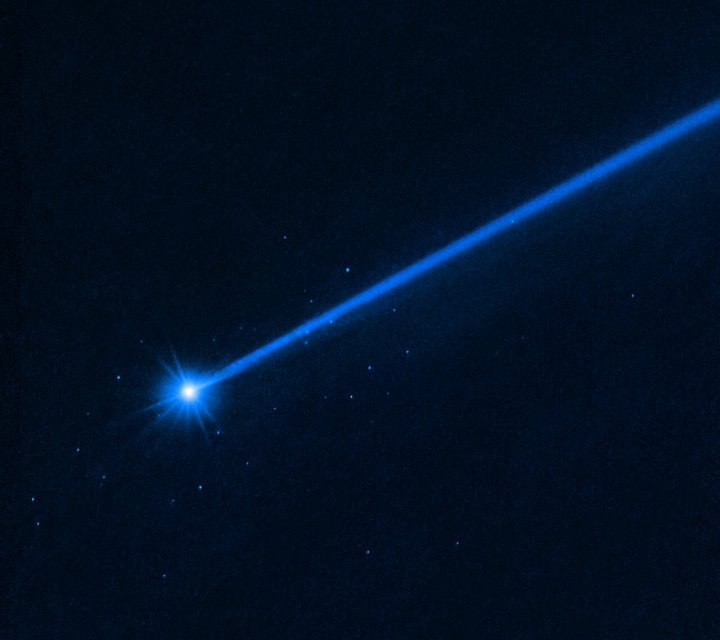Last year, NASA deliberately crashed a spacecraft into an asteroid, in a first-of-its-kind test of planetary defense. At the time, telescopes around the world including the Hubble Space Telescope observed the impact between the DART spacecraft and the Dimorphos asteroid, capturing footage of the plumes of dust thrown up. Now, Hubble has observed Dimorphos once again and seen that a number of boulders have been ejected from the asteroid.
The Hubble image shown below was taken on 19 December 2022, around four months after the impact, and shows the bright streak of the asteroid across the sky, surrounded by small boulders which were knocked loose during the impact. This view was only possible after several months as the impact initially sent up large amounts of dust which made it difficult to see the asteroid in detail.

Researchers observed 37 boulders in total, ranging in size from 1 to 6.7 meters. The aim of the impact was not to destroy the asteroid but to redirect it — the idea being that, in case an asteroid were threatening Earth, this method could be effective at nudging its orbit so that it would miss the planet. The recent observations also gave further confirmation that the asteroid’s trajectory around its partner asteroid, Didymos. However, to learn more about the exact effects of the impact, we will have to wait for the European Space Agency’s Hera mission, which will visit the asteroid binary to collect more data and which will launch next year.
In total, around 0.1% of the mass of the Dimorphos asteroid was displaced by the impact, with the boulders now drifting away from the asteroid. Hubble scientists explain that these are probably not made from chunks of the asteroid, but rather are boulders that were sitting on the asteroid’s surface when the impact occurred.
“It’s not clear how the boulders were lifted off the asteroid’s surface,” Hubble scientists write. “They could be part of an ejecta plume that was photographed by Hubble and other observatories. Or a seismic wave from the impact may have rattled through the asteroid — like hitting a bell with a hammer — shaking loose the surface rubble.”
Editors’ Recommendations
Services Marketplace – Listings, Bookings & Reviews